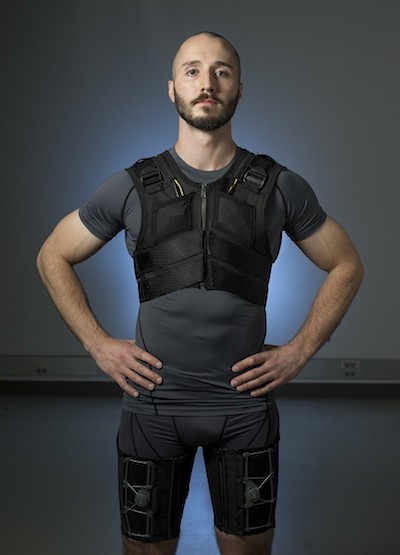Engineers at Vanderbilt University have developed a powered undergarment, which they say can limit back pain and strain. In a recent study, the mechanized clothing was shown to decrease stress on lower back muscles during bending and lifting tasks.
“The way in which this smart undergarment reduces stress on the low back takes advantage of natural leaning and lifting biomechanics,” Karl Zelik, the principal investigator on the project, told Digital Trends. “As a person leans forward or lifts an object, his or her trunk and hips flex, and buttocks naturally protrudes backwards. When wearing the smart undergarment, these motions stretch the embedded elastic bands which run in parallel to the spine.”
The elastic bands in the smart underwear take over some — but not all — of the work that usually falls on lower back muscles and ligaments.
To test the underwear, the researchers gave them to eight subjects, who were asked to lift 25-pound and 55-pound weights, while bending at 30, 60, and 90 degrees. The underwear was shown to reduce lower back muscle activity by between 15 and 45 percent on average.
Although some of us may bend and lift throughout the day, we are not constantly in need of assistance, so Zelik and mechanical engineering Ph.D. student Erik Lamers, who helped design the device, embedded a small electromechanical clutch into the underwear that allows it to be turned on and off at its wearer’s discretion.
“When performing daily tasks that do not put heavy strain on your back you can disengage … the elastic assistance, such that the smart garment just feels like normal clothing,” Zelik said. “If you are about to lift something heavy or you need to lean for a prolonged period of time, then you can simply engage the elastic bands to assist you.”
The wearer can either use an app or double tap the chest to engage and disengage the clutch.
Smart, powered clothing — from undergarments to this modular exoskeleton lets disabled children walk on their own two feet to exoskeletons — have emerged as a promising way to take the strain off of our bodies both at home, in public, and in the workplace.
“Currently we have smartphones and smartwatches,” Zelik pointed out. “Smart clothing may be the next big thing because it has the potential to do a whole lot more in terms of improving societal health and preventing injuries.”



